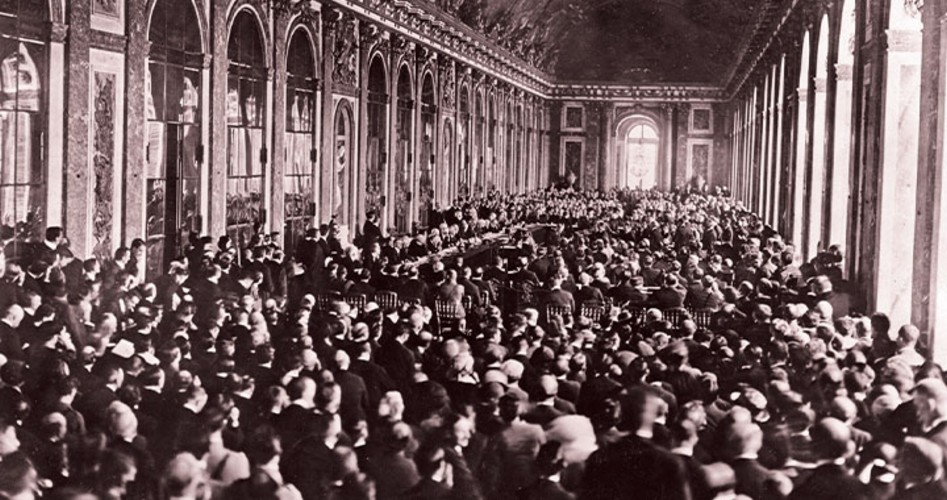Breaking the League
On December 3, 1918, the S.S. George Washington set sail on a historic and uniquely ironic voyage, one that would cap a history of ironies for the ship that had briefly served as a German luxury liner. Noted for ferrying the rich and the famous across the Atlantic, this steamer was the third-largest ship in the world when it was launched 10 years earlier, in 1908. It was built in Germany by the German shipping line Nord-deutscher Lloyd, but, with the outbreak of World War I, the S.S. George Washington was seized by the United States, and for the duration of the war was used as a troop ship to carry U.S. soldiers to Europe to fight Germany and the Central Powers.
The famed passenger on this particular voyage was not a titan of industry, a crowned head of Europe, or an opera star, but the president of the United States. President Woodrow Wilson was leading an American delegation to the Paris Peace Conference at the Palace of Versailles. What was supremely ironic about this venture was that President Wilson was sailing on a ship named in honor of our nation’s first president, George Washington, who, in his Farewell Address, had famously counseled his countrymen, “It is our true policy to steer clear of permanent alliance with any portion of the foreign world.” Thomas Jefferson, in his Inaugural Address, paid homage to Washington’s political wisdom, pledging: “Peace, commerce, and honest friendship with all nations — entangling alliances with none.” Yet, President Wilson, who sprinkled his speeches with reverential references to Washington, Jefferson, and other American Founding Fathers, was headed to Europe on a gambit to establish the most far-reaching entangling alliance the world had ever seen: the League of Nations.
Indeed, the proposed League, which was a major feature of the Treaty of Versailles, was far more than a mere “alliance.” As envisioned by its authors, the League of Nations was to be the seed of a nascent world government that would eventually wield global judicial, legislative, and executive powers. A most immediate concern of the designers was to invest the League with military power by potentially obligating all members of the League to go to war not only whenever any member suffered military aggression by another member, but also “in case of any threat or danger of such aggression.” (Emphasis added.) As we will see, it was this first modern stab at “collective security,” as embodied in Articles 10 and 11 of the Covenant of the League of Nations, that doomed both the League and the Versailles Treaty to defeat in the U.S. Senate.
JBS Member or ShopJBS.org Customer?
Sign in with your ShopJBS.org account username and password or use that login to subscribe.

 Subscribe Now
Subscribe Now
- 24 Issues Per Year
- Digital Edition Access
- Exclusive Subscriber Content
- Audio provided for all articles
- Unlimited access to past issues
- Cancel anytime.
- Renews automatically

 Subscribe Now
Subscribe Now
- 24 Issues Per Year
- Print edition delivery (USA)
*Available Outside USA - Digital Edition Access
- Exclusive Subscriber Content
- Audio provided for all articles
- Unlimited access to past issues
- Cancel anytime.
- Renews automatically


